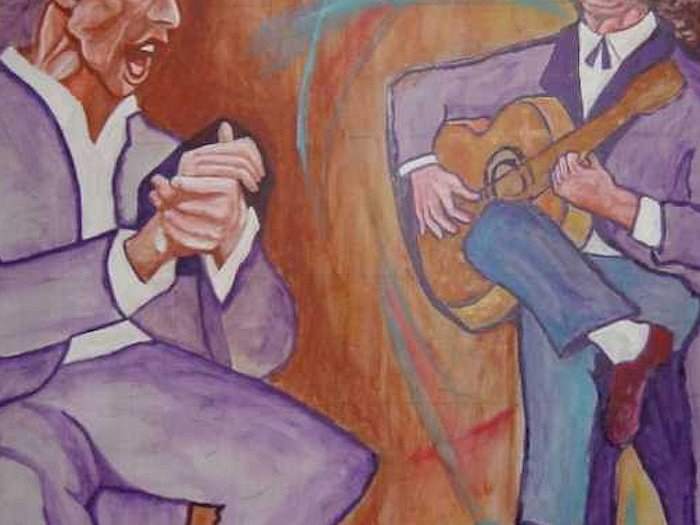
Flamenco is a musical genre so traditionally tied to Andalusia that you may not know that just kilometres from your property at La Manga Club, in the mining region of Cartagena-La Union, up to six well-known flamenco styles were born. A large influx of Andalusian workers seeking employment opportunities in the Region of Murcia were the originators of the first eastern mining songs in the XIX century, and they’re still performed to this day to recall the pain of that hard work under ground. After reading this post and understanding more about them, you won’t want to miss the Cante de las Minas International Festival that has been celebrated every August in La Unión since 1961. It’s one of the most important flamenco festivals in Spain, and takes place just 15 minutes from our golf resort!
Taranta
Growing out of the Almerian fandango, this is a long, deep and virtuous cante that requires a wide vocal range. As the fundamental genre of Eastern flamenco, it acts as a reference for all of them. With a loose rhythm and tremendous musical quality, there is an extensive variety of Tarantas in the Murcian Region, but also in Almería and Jaén. These latter were the two Andalusian provinces from which hailed the majority of the workers who came to the region and sang of their hard lives in the Murcian mines, and who became the forefathers of the Murcian flamenco styles.
Minera
Among the Eastern mining cantes, this is a style that is likewise deep and challenging. With a tragic character and complex performance style, this cante appeared in the mid-XIX century as a derivation of the local Fandangos of the Sierra de la Unión. It disappeared after a few decades, only to resurface again in the 1950s.
Cartagenera
Also springing from the “flamenco-isation” of the local XVIII Fandangos, this style is more urban and doesn’t make reference to the mines. Known as the “cante de madrugá”, it became mixed with the Taranta that was surfacing in Almería, the area of Linares in Jaén, and in La Unión in Murcia, and its lyrics often refer to the city that gave it its name, Cartagena, as well as to love and other themes.
Miners’ Fandango
Another product of La Unión, the Miners’ Fandango is a unique style that maintains a very steady melodic line. The popularization of this style was thanks to Cartagenan artist Antonio Piñana, and especially to his song “Latidos del corazón”.
Levantica
Though it’s the most vibrant of all the Eastern cantes, this might be the least well-known style. Similar to the Miners’ Fandango, Levantica nonetheless displays more musicality and a specific melody in which you can hear the tonalities particular to the Miner styles.
Murciana
The flamenco version of the Murcian Fandango, its lyrics normally take the octosyllabic five-line stanzas native to the Fandangos. There is very little information available about this style, possibly because it wasn’t developed extensively.
With up to six flamenco types having their birthplace so close to your property at La Manga Club, it’s practically your duty to learn more about them, alive and well among the multitude of styles of this famed musical genre. Important artists, including singer Camarón de la Isla and guitarist and composer Paco de Lucía, contributed their entire lives to the popularization of Cartageneras and Tarantas, carrying them far afield from the mining areas of La Unión. And we also can’t forget to mention current artists, like Miguel Poveda, whose fame began to take off in 1993 at the Cante de las Minas Festival. This Catalan with a Murcian father won four out of the five total prizes in that edition of the festival, and today remains one of the major virtuosos of the Murcian flamenco styles.
Recent posts
-
08/12/25
Celebrate the 1200th anniversary of the city of Murcia from your property at La Manga Club
- 10/11/25
- 23/10/25
-
14/09/25
Thinking of buying property at La Manga Club? These 7 insights might just convince you
-
10/08/25
Looking for a day out from your home at La Manga Club? Visit the Ricote Valley and Cieza
-
18/07/25
Las Acacias: Buying a Luxury Villa in Spain’s Premier Golf Resort
-
23/06/25
Buying Property in La Manga Club: Discover the 5 Must-See Highlights of the Calblanque Regional Park
-
15/05/25
Dive just minutes from your La Manga Club home: the Islas Hormigas Marine Reserve